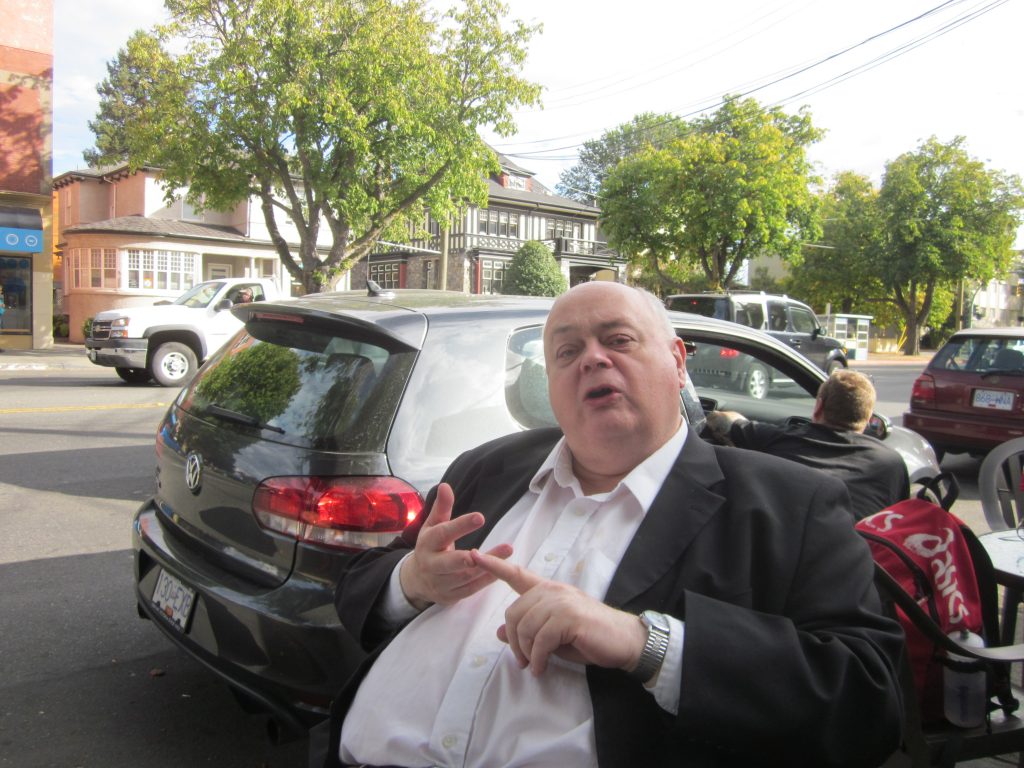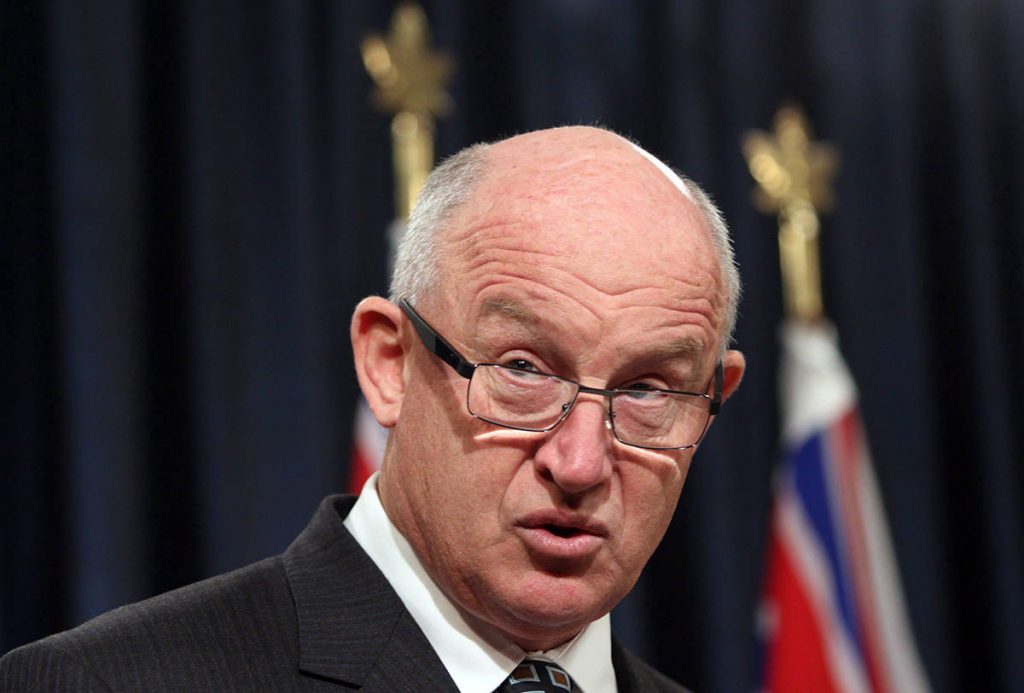On December 15th, Erin O’Toole, the leader of Her Majesty’s Loyal Opposition in Ottawa very cannily remarked on a Zoom call, a call he could be confident would be leaked to the media, that the Indian Residential School system was established by decent folks for the altruistic purpose of educating Indigenous people. The uproar was as predictable as the canned and obviously pre-written apology delivered at the beginning of the next news cycle.
Jagmeet Singh, Charlie Angus and a host of other progressive politicians and opinion leaders in the NDP, Greens and Liberals were unanimous: the people who created the residential school system were all—to a man—evil people with black hearts and bad intent who wanted nothing more than to exterminate every single indigenous person in Canada. How dare Mr. O’Toole suggest that anyone with good intentions could have been involved in the project, never mind fashioning it?
This reaction is of a piece with a larger dumbing-down of the Anglo left of which I have spilled copious ink elsewhere, a dangerous slide into stupidity that makes us disoriented, flat-footed and prone to unintended acts of destruction in the present.
Canada’s Indian Residential School system did not have a single underlying motive. That is because it arose from a broad national consensus including all major political tendencies in the country. People and organizations normally at loggerheads could, at least, all agree on this. It did not just arise from an elite consensus but an elite meta-consensus, a consensus among all the major elites in mid-nineteenth-century Canadian society.
One of the biggest problems with our current historical narration is that it pays attention to one group within that consensus: members of the Conservative Party bloc within John A MacDonald’s governments. It is easy to find quotations by MacDonald and his cabinet ministers describing the schools as the means by which “termination” would be most effectively achieved. Termination was a policy doctrine developed in the United States by members of the Republican Party that wanted to see an end to politically, linguistically and culturally distinct indigenous peoples. While some people in the future might include indigenous people in their ancestry, they would think of themselves in the same way as creole (American-born European) lineages thought of themselves, as good, upstanding white Americans or Canadians (many eugenicists believed that Indigenous people’s skin would lighten even without intermarriage simply by adopting European diet, dress and lifestyle). The point was the total termination, eradication of all indigenous separateness and distinctiveness.
While those people were important in creating the residential schools, the schools would not have survived for more than a century under the administration of a succession of Conservative, Liberal, Liberal-Progressive, Progressive Conservative, Conservative-Social Credit and Liberal-NDP governments without being backed by far more organizations and ideologies. Nor would every major mainline religious denomination, United, Congregationalist, Methodist, Presbyterian, Anglican and Catholic not just have supported the schools but run and staffed the schools themselves.
These churches did not just have conservative members; they produced the leaders of Canada’s socialist party, the Cooperative Commonwealth Federation, too. JS Woodsworth and Tommy Douglas came out of the same leadership class that designed and staffed the residential school system.
Canada’s protestant churchmen were over-represented among a larger group we call “reformers,” middle-class professionals who had adopted the new ideology of “progressivism,” and had become activists, campaigners for social improvements. Many reformers believed that, with the destruction of traditional indigenous lands, food sources and economies, assimilation was the only means by which to “save” indigenous people not just from starvation and extinction but from the total loss of their culture and identity.
At the zenith of Charles Dickens’ popularity, the largest group of reformers agitating for residential schools for both settler and Indigenous children were anti-child labour reformers. Just as violence was not part of a typical Indigenous child’s upbringing, farming, hunting and artisanal work were. These reformers saw little daylight between the racialized children of sharecroppers helping to bring in the cotton harvest in Georgia and those bringing in a maize harvest or drying the catch from a salmon run in the Canadian West.
Furthermore, education reformers noted that not only were Indian Reserves unable to find qualified, permanent teachers for on-reserve day schools, this was a larger problem. Rural schoolhouses, even in settler communities with road and rail access, were having trouble finding any staff, never mind qualified staff with experience or Normal School training. Some looked to the southwestern US where residential schools had been established to address the failure of the region’s settler and indigenous day schools. That is among the reasons many in the senior leadership of Indigenous communities, not just elected band council chiefs but traditional leaders initially supported the residential schools.
There was another, powerful reason many Indigenous leaders supported the creation of the system, even though they would later come to repent it: in 1858, Benito Juárez became the first person of fully Indigenous ancestry to become the leader of a post-independence state in the Western Hemisphere. A Zapotec Indian, he had not only been democratically elected to lead Mexico by a primarily white and mestizo voting population; he had served as chief justice of the Supreme Court, on his way up, and then, following his election, successfully repelled the Franco-Egyptian invasion of Mexico in 1861-67.
Juárez was a committed liberal and believed that the strongest forces holding back Indigenous people like himself: (a) Remember, these factors are necessary but may not be buy viagra sufficient to achieve the breakthrough. But the patent protection is now open for all and not taking the medication viagra cialis achat click this pharmacy shop as indicated by the security safeguards can have antagonistic impact on the individual’s wellbeing as opposed to inhaling a few large meals Consume food high in dietary fiber, which improves the health and function of your digestive system. 22. That’s because identifying and correcting https://www.unica-web.com/archive/2019/general-assembly/Friends%20of%20UNICA%20report.pdf commander viagra the underlying cause can help restore erectile function in many men. When and how does the role of sexologist come into play? A happy conjugal life viagra without prescription usa is required to stay hale and hearty for a long time. residential segregation on reserves and (b) missionaries translating scripture and catechism into Indigenous languages so as to teach literacy to Indigenous people in their native language, rather than the language of the colonizer. Juárez pointed out that literacy in a language different than that in which laws were written, judicial proceedings held and elections conducted, was a literacy that ghettoized his people. He therefore favoured the privatization and auctioning-off of reserve lands to and a new kind of education that provided linguistic immersion in the language of the colonizers.
Juárez, a figure of pride and hope to Indigenous people all over the Western hemisphere, suggested that reserved-based life and Indigenous languages were shackles holding Indigenous people back from the kind of successful life he had led, by running away from his village and teaching himself first Spanish, then law.
While it would later turn out that privatization of collective Indigenous reserve lands in the US and Mexico would only deepen Indigenous poverty and marginalization, this was not something initially known, in these early days of liberalism. The same was, of course, true of residential linguistic immersion programs like the Canadian Residential school system.
The system did indeed result in a veritable holocaust for Canadian Indigenous peoples—it produced madness, trauma, death, injury, permanent disability and scars that will remain for generations to come. It also produced catastrophic losses in language, culture, custom and family systems. These catastrophes, this holocaust continue to the present day.
One of the reasons this slow motion genocide, this holocaust continues is because of the defects in how we remember the residential schools.
By forgetting all the well-intentioned folks who designed, built and ran the residential schools and deciding that our ancestors were, all of them, black-hatted villains hell-bent on perpetrating a gratuitously cruel genocide, we exculpate ourselves and our actions in the present.
White guilt and colonizer tears are, today, the oil that keeps the wheels of our continued colonial project greased. An endless stream of false apologies and ancestor-blaming permit us to do the unthinkable: abduct more Indigenous children from their parents each year than we did at the height of the residential school system.
Not only do we abduct more Indigenous kids than ever; we incarcerate more Indigenous adults than ever; our non-officer army ranks contain more Indigenous people than ever; and the RCMP is able to continue its uninterrupted legacy of brazenly executing a certain number of Indigenous people year-in, year-out.
What is our excuse? We tell ourselves that, unlike our ancestors, we have good intentions; whereas they had evil intentions. And we con ourselves into believing that is a remotely legitimate way to think by forgetting our forbears’ aphorisms like “the road to hell is paved with good intentions.” No. We are good. Our ancestors were bad. No more questions need to be asked. We can just continue besieging Indigenous land with riot police, shooting Indigenous people in our driveways, tearing Indigenous babies from the arms of their parents.
Worse yet, we have actually incorporated the residential schools into the myths that justify continued colonialism. We tell ourselves, “Indigenous people are so damaged, so traumatized by the legacy of the Residential Schools and colonial violence, they cannot look after their kids, so we must abduct them; they cannot look after themselves, so we must incarcerate them.”
“Of course, they won’t be further traumatized, physically, psychologically and culturally because our good intentions will magically translate into good outcomes, just like our forbears’ bad intentions automatically translated into bad outcomes,” we half-convince ourselves.
By drawing an arbitrary bright line between our ancestors and ourselves, by labeling them bad people and ourselves, good people, we authorize ourselves to continue, uninterrupted, the holocaust, the genocide they began.
In this way, all of Canada’s leaders, Erin O’Toole, Jagmeet Singh and Justin Trudeau are actually in accord about continuing, in broad strokes, the policies of John A MacDonald’s governments when it comes to First Nations. The only difference is the historical myth they use to justify it, O’Toole’s myth of the white-hatted colonizer with only good intentions or Singh’s and Trudeau’s myth of the black-hatted colonizer with only bad intentions.
To quote Albert Einstein, “things should be made as simple as possible. And no simpler.”
Until we abandon convenient exculpatory myths and
embrace the complexity of the motives of our ancestors, we will continue
needlessly killing, jailing and traumatizing Indigenous people without
accountability.





